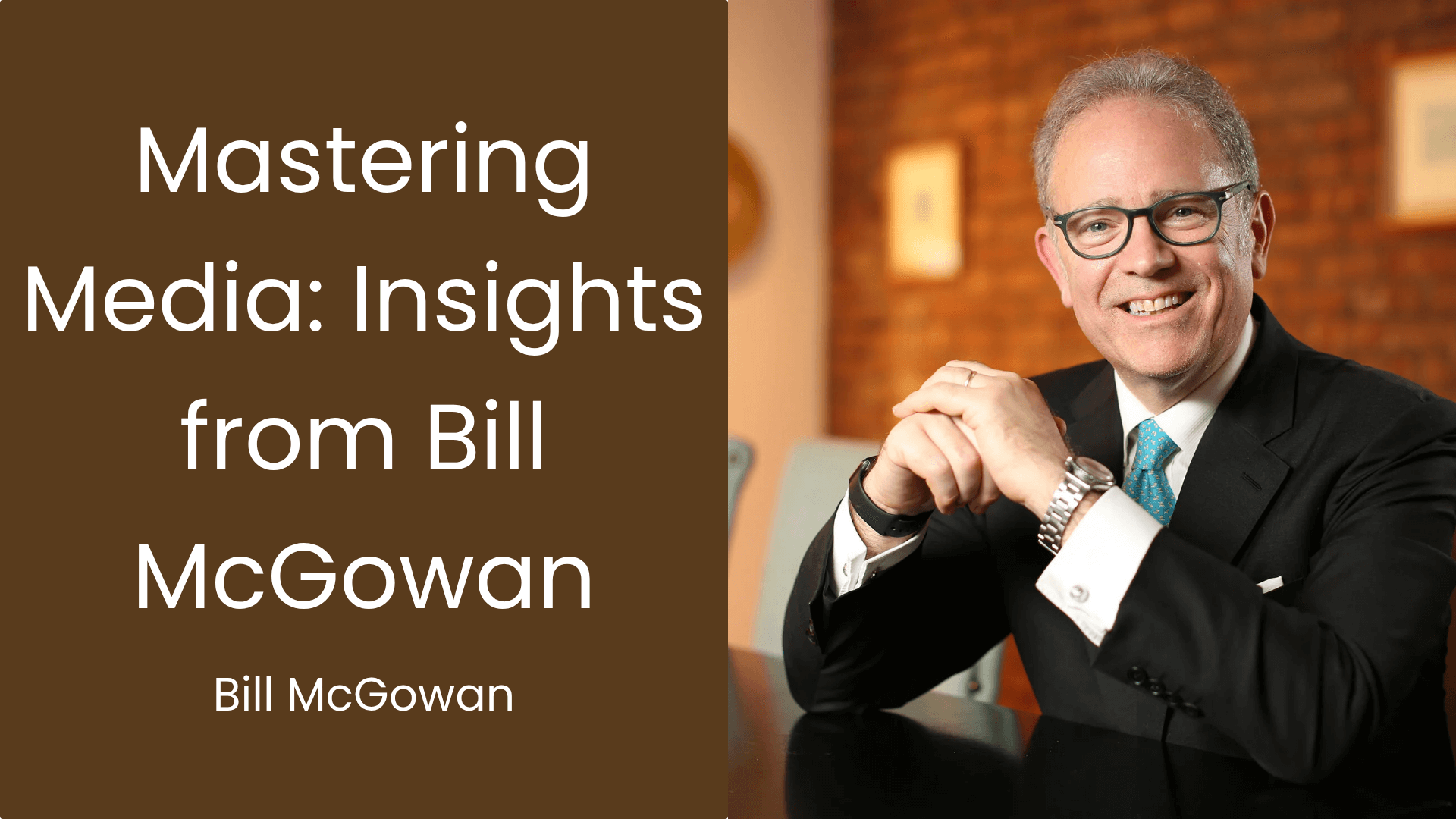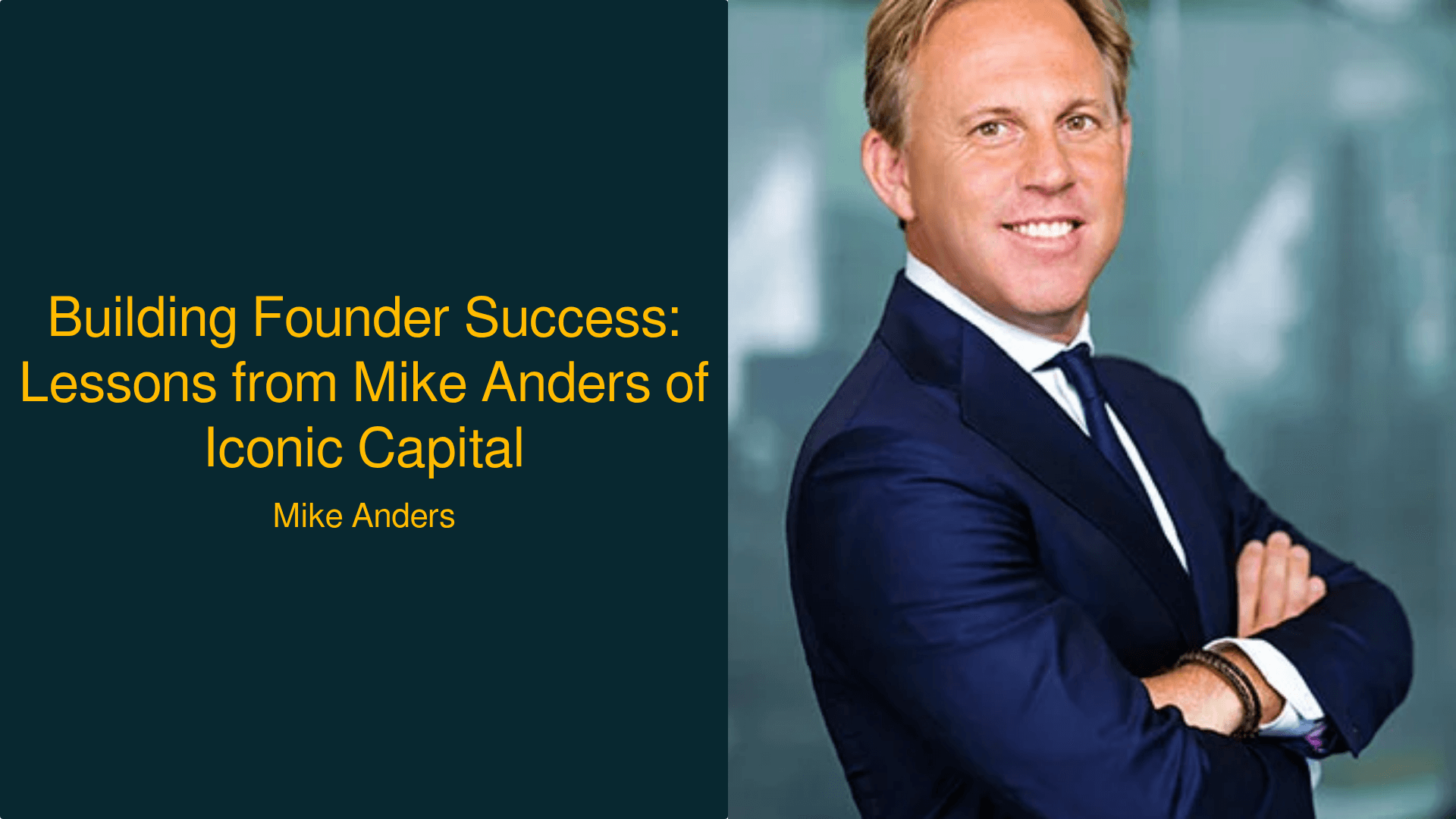Unlocking Founder Success: Key Insights from Bill McGowan
Discover essential strategies for founder success from Bill McGowan's interview, focusing on effective communication and storytelling.

Unlocking Founder Success: Key Insights from Bill McGowan
In today’s fast-paced business environment, effective communication is crucial for founder success. Bill McGowan, a renowned media trainer, has worked with high-profile clients like Kim Kardashian and Jeff Bezos, helping them navigate the complexities of public speaking and media interactions. In this article, we will explore key insights and actionable frameworks from my recent interview with Bill, focusing on how founders can enhance their communication skills to gain a competitive edge. We will cover strategies for preparing for media appearances, the importance of storytelling, and practical steps to ensure your message resonates with your audience. Join us as we delve into the world of effective communication and discover how to elevate your founder success.
The Art of Preparation: Setting the Stage for Success
The more famous you are, the more challenging it’s going to be for you to pull the conversation to where you want. — Bill McGowan
Why it matters: Preparation is key to successful media interactions. Bill emphasizes that many founders approach media interviews defensively, focusing on predicting questions rather than preparing their core messages. This can lead to a lack of authenticity and connection with the audience. By shifting the focus to what they want to communicate, founders can create a more engaging and impactful dialogue. For instance, a case study with a successful entrepreneur highlighted how they transformed their media presence by preparing a narrative around their brand’s story rather than just rehearsing answers. This approach not only improved their confidence but also resonated more with the audience, leading to increased engagement.
How to Prepare Effectively for Media Interactions
- Identify your key messages: Determine the core points you want to communicate about your brand or product.
- Craft your narrative: Develop a compelling story that illustrates your key messages, using real-life examples.
- Anticipate potential questions: While you shouldn’t script answers, consider what questions may arise and how they can lead back to your narrative.
- Practice your delivery: Rehearse your key messages out loud to ensure they flow naturally and authentically.
- Engage with your audience: During the interview, focus on making eye contact and connecting with the interviewer to create a conversational atmosphere.
The Power of Storytelling: Making Your Message Memorable
The more you blend in, the less you stand out and the less memorable you are. — Bill McGowan
Why it matters: Storytelling is a fundamental aspect of effective communication. Bill points out that stories are what make information relatable and memorable. By framing their messages within a narrative structure, founders can evoke emotions and create a lasting impression on their audience. Anecdotes from successful founders reveal how personal stories about their journey have significantly enhanced their brand’s visibility and resonance in the market. For example, when a founder shared their early struggles and how they overcame them, it not only humanized their brand but also inspired many others facing similar challenges, leading to a stronger community around their product.
How to Incorporate Storytelling into Your Communication
- Identify key moments: Reflect on your journey as a founder and pinpoint significant experiences that shaped your brand.
- Craft a concise narrative: Develop a clear beginning, middle, and end for your story, ensuring it aligns with your core message.
- Use vivid details: Incorporate descriptive elements to paint a picture for your audience, making your story more engaging.
- Connect emotionally: Highlight the emotions involved in your journey, allowing the audience to relate to your experiences.
- Practice your storytelling: Rehearse your story to ensure it flows naturally and resonates with your audience.
Controlling the Narrative: Mastering Media Interactions
What we coach people to do is how do we create the impression that this is a spontaneous give and take conversation. — Bill McGowan
Why it matters: Controlling the narrative during media interactions is essential for maintaining focus on your key messages. Bill discusses the importance of steering conversations without appearing disingenuous. Founders often fear difficult questions, but with the right preparation, they can address concerns while redirecting the conversation back to their strengths. This is crucial for building trust with the audience and ensuring that the conversation remains productive. A real-world example involves a tech entrepreneur who, faced with tough questions about data privacy, effectively acknowledged concerns while steering the discussion back to their innovative solutions, showcasing their commitment to user security.
How to Control the Narrative in Media Interactions
- Acknowledge concerns: Address any difficult questions directly to show transparency and build trust.
- Redirect the conversation: Use bridging phrases to transition back to your key messages, such as ‘That’s a great point, and it’s important to note…’
- Reinforce your strengths: Highlight your brand’s unique selling points during the conversation to keep the audience engaged.
- Practice active listening: Pay attention to the interviewer’s cues and adjust your responses accordingly.
- Stay calm and composed: Maintain your confidence and composure, even when faced with challenging questions.
Brevity and Clarity: Keeping Your Message Concise
The quickest way to lose an audience is to go on some rambling, circuitous, redundant narrative. — Bill McGowan
Why it matters: In an age of information overload, brevity and clarity are paramount. Bill emphasizes that founders must learn to communicate their messages succinctly. The ability to deliver key points quickly can determine whether an audience remains engaged or tunes out. Founders who practice clarity in their messaging often find that they can convey complex ideas more effectively, ultimately leading to increased understanding and retention among their audience. A notable example is a startup founder who, during a pitch, used concise language to articulate their value proposition, which impressed investors and led to successful funding.
How to Achieve Brevity and Clarity in Your Communication
- Identify your main point: Before speaking, clarify the single message you want to convey.
- Use simple language: Avoid jargon and complex terms that may confuse your audience.
- Practice summarization: Regularly practice distilling your messages into one or two sentences.
- Use bullet points in presentations: Break down your ideas into bullet points for easier comprehension.
- Seek feedback: After presentations, ask for feedback on your clarity and conciseness to improve.
Creating an Unforgettable Presence: Enhancing Your Delivery
Your visible enthusiasm for the value of the information you’re sharing is what communicates energy. — Bill McGowan
Why it matters: The delivery of a message can be just as important as the content itself. Bill highlights that enthusiasm and energy are contagious; when founders deliver their messages with passion, it captivates their audience. Developing a strong presence can significantly enhance how the audience perceives the speaker and their message, leading to greater impact and memorability. Founders who invest time in refining their delivery often see improved engagement and connection with their audience. A powerful instance involved a founder who, during a live presentation, exuded enthusiasm and energy, which resonated with the audience and led to a standing ovation.
How to Enhance Your Delivery for Greater Impact
- Practice deep breathing: Use breathing exercises to calm your nerves and project your voice.
- Engage with body language: Use gestures and movement to emphasize key points and enhance your presence.
- Make eye contact: Connect with your audience by looking at different individuals during your presentation.
- Vary your vocal tone: Use pitch and pacing variations to maintain interest and emphasize important points.
- Solicit audience interaction: Encourage questions or feedback during your presentation to create a two-way conversation.
Conclusion
In conclusion, effective communication is a vital component of founder success. By implementing the strategies discussed in this article, founders can enhance their media interactions, storytelling abilities, and overall presence. Bill McGowan’s insights provide a roadmap for navigating the complex world of communication, ultimately leading to greater engagement and success in their ventures. The principles of preparation, storytelling, narrative control, brevity, and delivery are interconnected, and mastering them can significantly impact a founder’s ability to resonate with their audience. As you embark on your journey as a founder, remember that your voice is your most powerful tool. Use it wisely, and let your passion shine through. Now is the time to take action! Identify one area of your communication that you want to improve, and implement the strategies outlined in this article. Whether it’s refining your storytelling or practicing your delivery, every step you take will bring you closer to achieving founder success.


